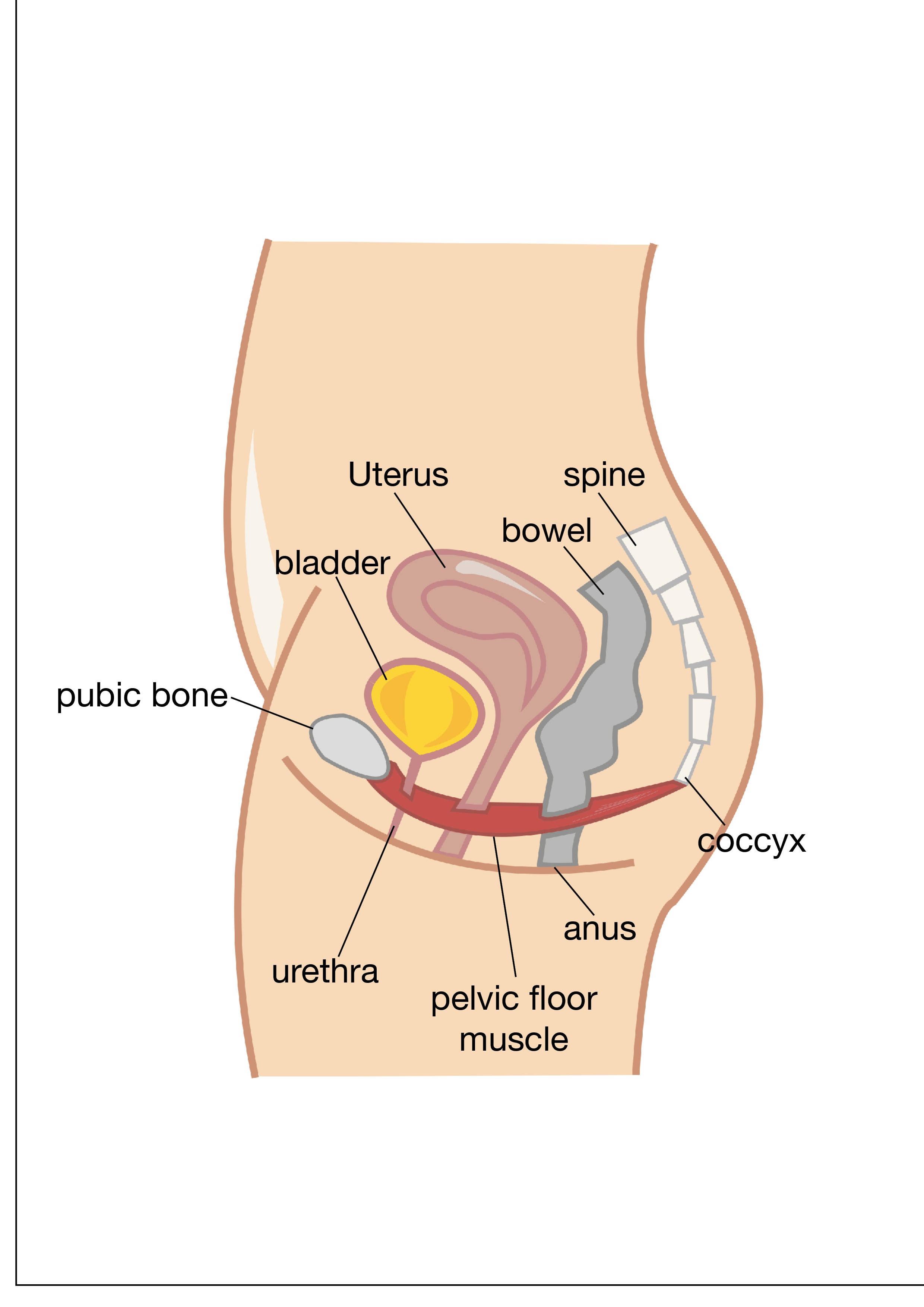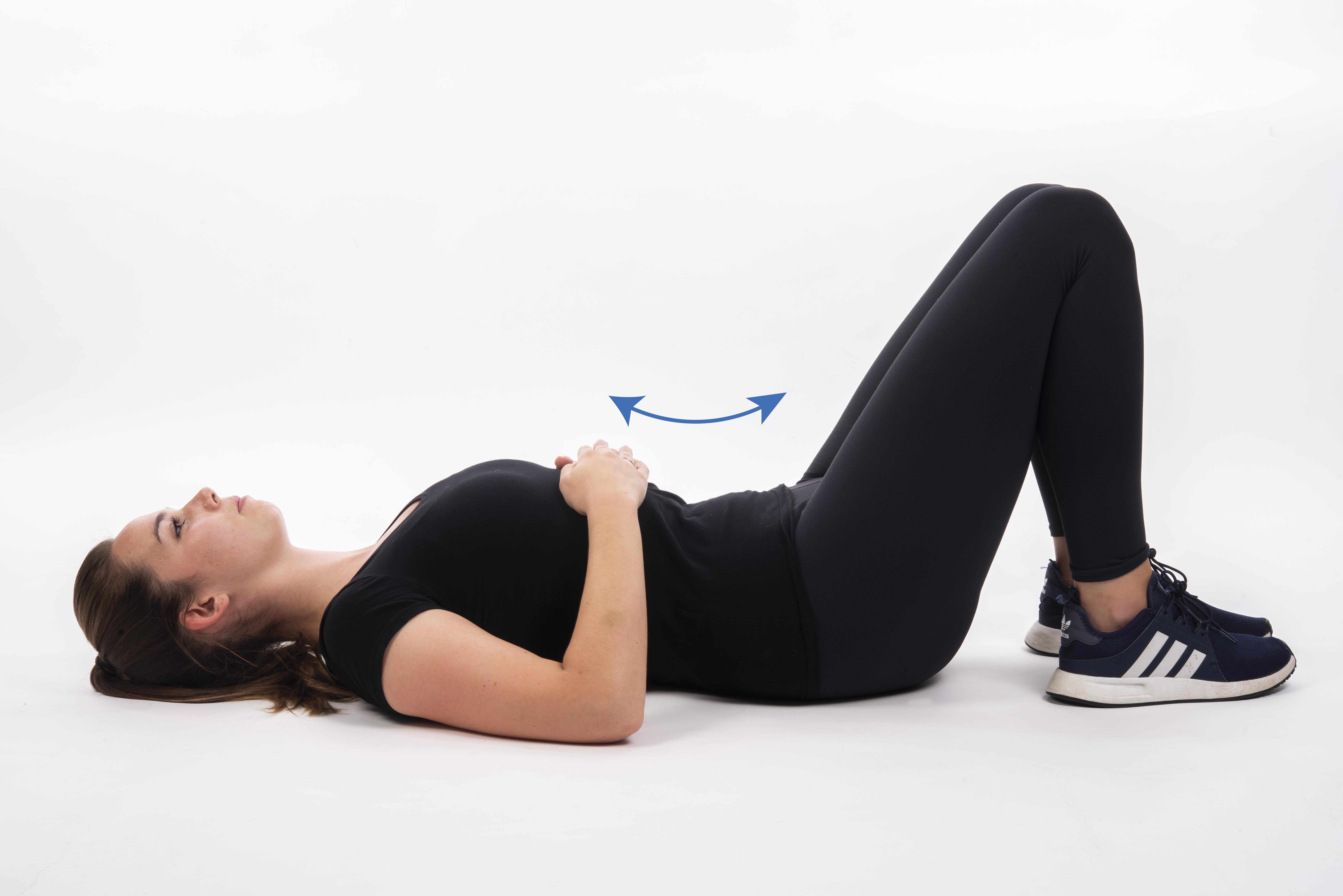Gynaecological surgery: aftercare advice
Information for patients from Women's Health
This information leaflet has been written to help aid a good recovery after your surgery.
Please note: this leaflet is for general circulation to all patients having major gynaecological surgery. If you have specific instructions from your doctor or nursing staff, some of the advice may not apply to you.
Exercises from the first day after your surgery
The exercises listed below are given as a guide; perform them as your body allows.
Deep breathing
Sit up well in bed, breathe in slowly, trying to direct one breath to the lower part of your chest. When your chest feels comfortably full, breathe out through your mouth. Repeat three times.
Coughing
Most people feel the need to cough after an anaesthetic. It will hurt less if you sit well in bed with your knees bent and apply firm pressure over your stitches. If you have a cut in your abdomen (tummy), support your wound or cuddle your tummy with your hands, forearms, or pillow. In both cases, give a good strong cough and spit out any phlegm. Repeat several times during the day. Continue for three to four days.
Foot and leg exercises
These exercises help increase the circulation in your legs, which reduces your risk of developing blood clots in your veins after surgery.
Flex your feet up and down quickly at your ankles, then round in a circle.
Bend up one knee, then straighten. Repeat with your other knee. Repeat five times with each leg.
Do these exercises as often as you can. Continue them at least until you go home.
When can I get out of bed and move around?
In general, you will be encouraged to get out of bed the day after your operation. You will get out of bed for the first time with the help of a nurse if needed. When getting out of bed:
bend your knees up, roll onto your side keeping your knees together
push yourself up to a sitting position with your hands, allowing your feet to lower down to the floor
once standing, stand tall with your bottom tucked in.
Pelvic floor muscles

Where are my pelvic floor muscles?
Pelvic floor muscles stretch like a hammock from the pubic bone in front to the bottom of the back bone. They encircle the openings of the bladder, vagina, and back passage (see diagram).
What do they do?
Pelvic floor muscles work steadily all day. They help with bladder control, keeping urine in the bladder until we reach a toilet. They also stop urine from leaking when we cough, laugh, sneeze, lift something, or exercise.
Why should I exercise my pelvic floor muscles?
Exercises after your operation will help maintain / regain control of your pelvic floor muscles. There are many reasons why pelvic floor muscles weaken, including pregnancy, labour, persistent coughing, constipation, being overweight, menopausal changes, persistent heavy lifting, and pelvic surgery. To strengthen your pelvic floor and prevent urine leakage, you must exercise your pelvic floor muscles.
How do I exercise my pelvic floor muscles?
Tighten the ring of muscle around your back passage, as if you are trying to stop passing wind. Also try and tighten and pull up the ring of muscle around your vagina as if trying to stop passing urine, then relax. This is a fast contraction. Complete 10 contractions each day. Do not do all the contractions at once.
Tighten the same muscles and hold the tightness for approximately 10 seconds. Complete 10 contractions each day. Do not do all the contractions at once. This is a slow contraction.
These two exercises may help to relieve backache and trapped wind.
When should I exercise my pelvic floor muscles?
If you have a catheter, wait until it is removed. Then you cannot exercise too often. Aim for at least five times a day. You can exercise lying, sitting, or standing, perhaps while you eat, washing your hands, or using the telephone. This is an exercise for life.
How do I know that I am doing the exercises properly?
Try to stop your urine flow, but only once a week - this is just a test. Repeatedly stopping your urine flow can cause problems.
When exercising your pelvic floor muscles, do not:
hold your breath
squeeze your legs together; or
tighten your tummy and buttocks.
These are not the right muscles.
Lower abdominal exercises
The following exercises are designed to tone up your abdominal (tummy) muscles, which may have been weakened following your surgery. These exercises will also provide support to your lower back. Start the following exercises two to three days after your operation, or when you feel ready.

Lie on your back with knees bent.
Take a deep breath in and out.
Gently flatten your lower stomach muscles by drawing in your belly button towards your spine (see diagram).
Feel this contraction with your fingers.
Start the contraction by pulling up your pelvic floor muscles. Your pelvis should not move during this contraction.
Do not allow your upper stomach muscles to take over.
Do not hold your breath, but continue to breath gently in and out.
Hold the contraction for 10 seconds, and aim to repeat 10 times.
You can move on to doing this exercise sitting and standing.
Exercise rules
Listen to your body.
Stop if it hurts.
Stop if you are tired.
Never do a sit-up with your legs straight.
Never do a double leg lift from lying.
Other points to remember
Once you go home
A good balance of rest and exercise should be continued for the first few weeks at home. Continue the programme of exercises and try and aim to do two short walks each day. These walks should be for about 10 minutes, increasing as you feel your stamina returning. By the fourth week, you should be able to manage a 40 minute walk. Swimming is excellent, but not until after your six-week check-up. Do not start competitive sport or energetic activity for three months.
Going up and down stairs is quite safe, however, if you are unsure try to limit how many times you have to go up and down.
For the first one to two weeks, you may help with easy household jobs (such as light dusting, preparation of light meals, and peeling vegetables). Gradually do more as you feel able; six to eight weeks after surgery you should be able to do everything except heavy lifting.
If you pick up anything on the floor, always remember to bend your knees not your back, to avoid back strain. Pull in your tummy muscles and tighten your pelvic floor.
For the first two to three weeks do not:
lift any heavy shopping bags (maximum one 2kg bag)
dig the garden
move any furniture
use the vacuum cleaner; or
lift baskets of wet washing.
Do not forget your posture is important at all times. Remember to sit and walk tall, with your tummy and bottom pulled in.
Avoid sex for four to six weeks.
You may drive again two to four weeks after leaving hospital, depending on what surgery you had. Please check with your insurance company before driving.
Avoid constipation by eating a balanced diet, including fibre and drinking plenty of fluids.
If you have bladder symptoms, discuss this at your six week check-up.
It is important that you wear your surgical stockings, and complete the course of any blood thinning injections you are given.
What do I do if I feel unwell at home?
Please contact the ward to discuss any concerns you may have once you have left the hospital.
Gynaecology Assessment Unit, Queen Elizabeth the Queen Mother Hospital, Margate
Telephone: 01843 235009 (open 24 hours a day)Women’s Health Suite, William Harvey Hospital, Ashford
Telephone: 01233 651987 (open 24 hours a day)
Please note
This leaflet is for general circulation to all patients having major gynaecological surgery. If you have specific instructions from your doctor or nursing staff, some of the advice may not apply to you.